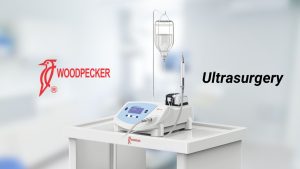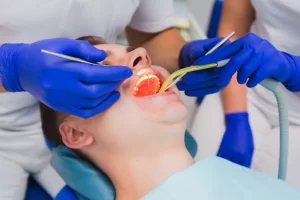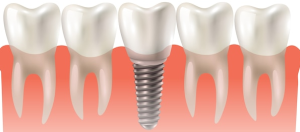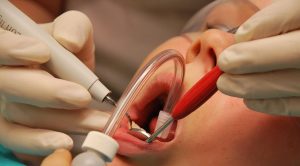Piezoelectric Surgery Devices: The Next Wave in Dental Surgeries
Embracing Innovation in Dentistry: The Rise of Piezoelectric Surgery
In the realm of modern dentistry, innovation is not just a buzzword; it’s a driving force that continuously reshapes patient care and treatment methodologies. Among the most noteworthy of these innovations is piezoelectric surgery in dentistry – a technology that has revolutionized the way oral surgeries are performed. This advanced approach, utilizing piezosurgery devices, stands at the forefront of minimally invasive dental procedures, offering precision and efficiency that were once thought unattainable.
Piezoelectric surgery, or piezosurgery, refers to a technique that uses ultrasonic vibrations for cutting bone tissue with incredible accuracy while leaving soft tissues unharmed. This surgical method, powered by piezoelectric devices, has transformed various aspects of dental surgery, making procedures that were once complex and invasive, more precise and patient-friendly. The technology has found its niche not just as a tool, but as a cornerstone in advanced dental surgery tools, offering unparalleled benefits in terms of surgical control and outcome.
As we delve deeper into the role of piezosurgery devices, it becomes clear that they are more than just equipment; they represent a leap into the future of dental care. These devices are the embodiment of precision in oral surgery, allowing dentists to perform a range of procedures, from intricate implant placements to delicate periodontal surgeries, with enhanced efficiency and patient comfort.
In this blog, we will explore the journey of piezoelectric surgery in dentistry, examining how it has become an integral part of modern dental practices and the numerous ways in which it continues to transform dental surgeries. As we navigate through this exploration, we will uncover the myriad ways piezosurgery devices are setting new standards in dental treatment and patient care.
The Technology Behind Piezoelectric Surgery
Understanding the Mechanics of Piezosurgery Devices
Piezoelectric surgery, a significant advancement in dental surgery tools, utilizes a sophisticated mechanism that is distinctly different from traditional surgical methods. At its core, the technology leverages the piezoelectric effect, a phenomenon where certain materials generate an electric charge in response to applied mechanical stress. Piezosurgery devices employ this principle by using ultrasonic vibrations to precisely cut bone tissue without damaging the surrounding soft tissues.
These devices consist of a generator and a handpiece, with the generator producing ultrasonic frequencies that are transmitted to the surgical site through the handpiece. The tips of these devices are designed to resonate at specific ultrasonic frequencies, typically ranging from 25 to 29 kHz. When these tips come into contact with bone tissue, they enable precise and controlled cuts, thanks to the micro-vibrations generated by the piezoelectric effect.
Precision and Efficiency in Oral Surgery
The precision offered by piezosurgery devices is unparalleled, making them highly valuable in complex oral surgeries. Unlike conventional drills and saws that remove bone through a rotary action, piezosurgery creates a linear cutting motion. This allows for extremely accurate, clean, and controlled cuts, minimizing the risk of overcutting or causing collateral damage to surrounding soft tissues such as nerves, blood vessels, and mucosa.
Furthermore, the efficiency of these devices is evident in their ability to reduce surgery time and enhance intraoperative visibility. Since they cause less bleeding and swelling compared to traditional methods, surgeons can operate with a clearer view of the surgical site. This not only improves the precision of the procedure but also contributes to faster patient recovery.
Advantages of Piezoelectric Surgery in Dental Procedures

Minimally Invasive Nature of Piezoelectric Surgery
Piezoelectric surgery, epitomized by innovative devices like the Woodpecker Surgery X, has marked a paradigm shift in dental procedures with its minimally invasive approach. This technology, harnessing ultrasonic vibrations, allows for precise bone cutting while preserving the integrity of soft tissues. This precision greatly reduces the invasiveness of various dental surgeries, making them less traumatic for patients.
The Woodpecker Surgery X stands out for its ability to offer controlled and delicate cuts, crucial in surgeries where avoiding damage to surrounding tissues is imperative. For example, in implantology, the accuracy of piezoelectric devices ensures that only the bone necessary for implant placement is affected, leaving adjacent tissues undisturbed. This targeted approach minimizes post-operative swelling and discomfort, significantly enhancing the patient’s experience.
Enhancing Patient Comfort and Treatment Efficiency
Apart from being minimally invasive, piezoelectric surgery offers a leap in patient comfort. The Woodpecker Surgery X, for instance, operates with minimal noise and vibration, a stark contrast to the often-intimidating sounds and sensations associated with traditional drills. This feature is particularly beneficial in reducing patient anxiety and discomfort, making the surgical experience more tolerable.
Furthermore, piezoelectric surgery contributes to more efficient dental treatments. The precision of devices like the Woodpecker Surgery X translates into shorter procedure times and faster healing. With reduced trauma to the surgical site, patients often experience quicker recovery, leading to less downtime and a faster return to normal activities.
Piezoelectric Surgery Across Dental Specialties

Versatility in Dental Procedures
Piezoelectric surgery, with its precise and gentle approach, has found applications across a range of dental specialties, significantly enhancing treatment outcomes in each. Its versatility is evident in the diversity of procedures that have been revolutionized by this technology.
In Implantology: Piezoelectric devices shine in implant placements. Their precise bone cutting ability allows for exact shaping of the implant site without damaging surrounding tissues. This precision is crucial in ensuring the correct positioning and stability of dental implants, which is vital for their long-term success.

In Periodontics: For periodontal procedures, piezoelectric surgery offers a minimally invasive solution for bone grafting and flap surgeries. The ability to precisely target bone while sparing soft tissues leads to reduced postoperative discomfort and quicker healing, making the periodontal treatments more patient-friendly.
In Endodontics: Endodontists utilize piezoelectric surgery for intricate procedures like apicoectomies. The precision offered by piezoelectric tools allows for accurate removal of the apex of a tooth root, aiding in the treatment of root canal infections and ensuring a higher success rate of endodontic treatments.
Enhancing Precision in Oral Surgery

The application of piezoelectric surgery in these dental fields underscores its contribution to precision in oral surgery. By allowing for highly controlled and accurate surgical interventions, piezoelectric devices facilitate innovative treatment approaches. They enable dental professionals to perform complex procedures with greater confidence and predictability, directly benefiting patient outcomes.
In conclusion, the role of piezoelectric surgery across various dental specialties is transformative. Its ability to combine precision with a minimally invasive approach has not only improved the quality of dental treatments but has also opened doors to new, innovative surgical techniques, redefining what is possible in oral healthcare.
Patient-Centered Advantages of Piezosurgery
Improving Patient Experiences Through Advanced Technology
The adoption of piezoelectric surgery in dental practices has marked a significant shift towards more patient-centered care. This advanced surgical approach is not only appreciated for its technical precision but also for the substantial benefits it offers to patients in terms of comfort and recovery.
One of the most notable patient-centered advantages of piezosurgery is the reduction in post-operative discomfort and swelling. Unlike traditional surgical methods, which can be quite invasive and traumatic, piezoelectric devices cut with such precision that they largely spare surrounding soft tissues. This results in significantly less trauma, leading to reduced pain and swelling after procedures. Patients undergoing treatments with piezosurgery often report a more comfortable postoperative experience, with some even experiencing a quicker return to their daily activities.
Case Studies Highlighting Enhanced Patient Outcomes
An illustrative case study involves a patient undergoing dental implant surgery using piezoelectric technology. The patient, who had previously experienced traditional implant surgery, noted a stark difference in recovery times and post-operative discomfort. With piezosurgery, the patient experienced minimal swelling and was able to resume normal activities much sooner than expected.
Another example can be seen in periodontal treatments. Patients treated with piezoelectric surgery for flap procedures or bone grafting often show faster wound healing, less post-operative pain, and minimal bleeding, significantly improving their overall treatment experience.
In conclusion, piezoelectric surgery offers considerable advantages in terms of patient comfort and recovery. These benefits, coupled with the precision and efficiency of the technology, underscore its effectiveness in improving patient outcomes. By focusing on minimizing patient discomfort and enhancing recovery, piezosurgery aligns perfectly with the modern ethos of patient-centered dental care.
The Future of Piezoelectric Surgery in Dentistry
Anticipating Advancements in Piezosurgery Equipment
The trajectory of piezoelectric surgery in dentistry points towards an exciting future, brimming with potential innovations and advancements. As we look ahead, the evolution of piezosurgery equipment is poised to play a pivotal role in shaping the next generation of dental surgery techniques. The ongoing research and development in this field suggest that future piezosurgery devices will be even more refined, efficient, and tailored to the specific needs of diverse dental procedures.
One of the key areas of future development is the integration of smart technology into piezosurgery equipment. This could include features like AI-assisted navigation systems, providing real-time guidance during surgeries, and enhancing the precision of surgical procedures. Such advancements would further streamline the surgical process, reducing the potential for human error and improving patient outcomes.
Emerging Research and Technological Breakthroughs
Emerging research is also focusing on making piezosurgery equipment more user-friendly and accessible. Future devices may feature ergonomic designs that reduce practitioner fatigue, wireless capabilities for better maneuverability, and customizable settings for a wide range of surgical applications.
Additionally, there’s potential for advancements in ultrasonic technology, aiming to make piezoelectric cuts even more precise and less invasive. This could lead to the development of new surgical techniques that further minimize trauma and expedite patient recovery.
Conclusion
Embracing the Transformation Brought by Piezoelectric Surgery
As we conclude our exploration of piezoelectric surgery devices in dentistry, it’s evident that this technology has catalyzed a transformative shift in the way dental surgeries are conducted. The journey from traditional surgical methods to the precision and finesse offered by piezoelectric devices marks a significant leap in the field of oral healthcare. These devices have not only refined surgical techniques but have also redefined the standards of patient care and comfort.
Piezoelectric surgery, with its minimally invasive approach, has brought about a paradigm shift in dental procedures, offering a level of precision that was previously unattainable. This technology has proven to be a game-changer in various dental specialties, from implantology to periodontics, enhancing both the safety and efficacy of treatments. The patient-centered benefits, including reduced postoperative discomfort and faster healing times, underscore the profound impact of piezoelectric surgery on the patient experience.
Looking Ahead: The Future of Dental Surgery Equipment
Looking towards the future, the continuous evolution of dental surgery equipment, especially piezoelectric devices, holds immense promise. The ongoing advancements in this technology point towards an era of even more sophisticated and patient-friendly surgical solutions. As research and innovation continue to drive the development of new and improved piezosurgery equipment, the potential for further enhancing minimally invasive techniques in dentistry is vast.
In essence, piezoelectric surgery devices are not just tools; they represent a significant advancement in dental care. Their role in shaping the future of dental surgeries is undeniable, paving the way for procedures that are more precise, less traumatic, and more aligned with the overall well-being of patients. The future of dental surgery equipment looks bright, with piezoelectric technology at the forefront, leading the charge towards more innovative, efficient, and patient-centric dental care.





Leave a comment